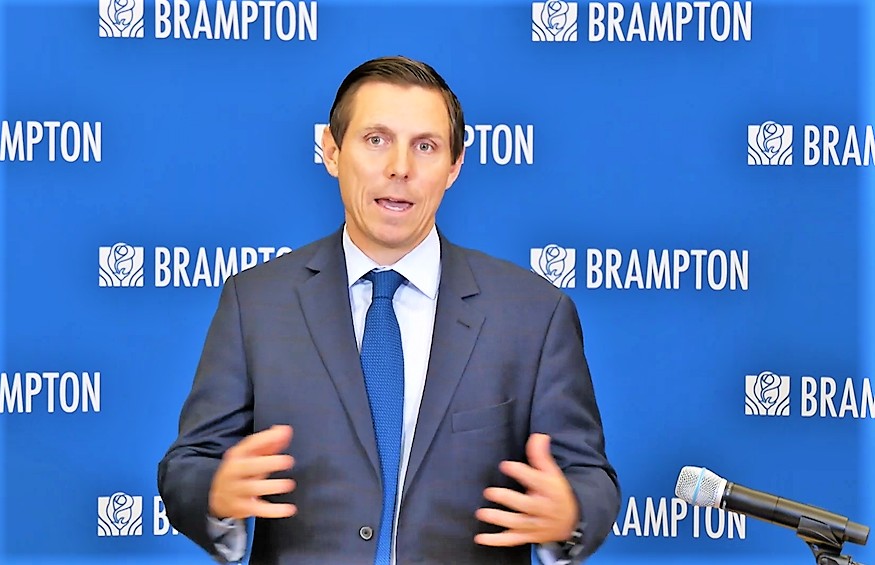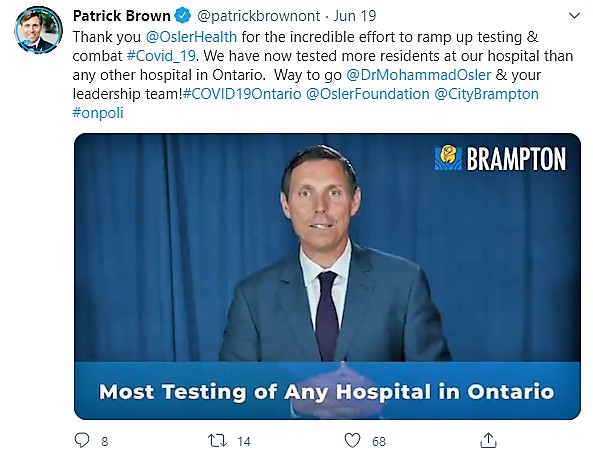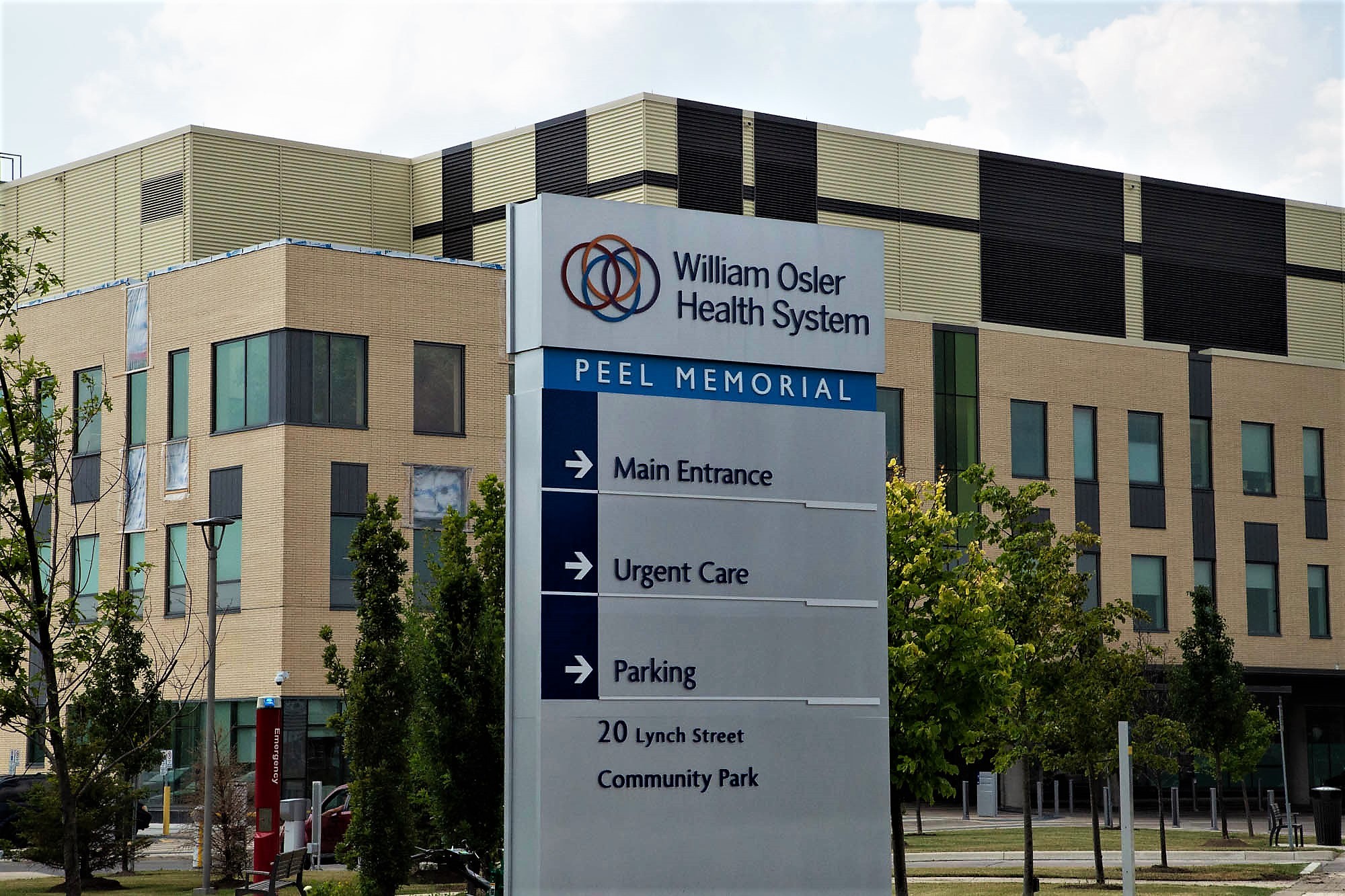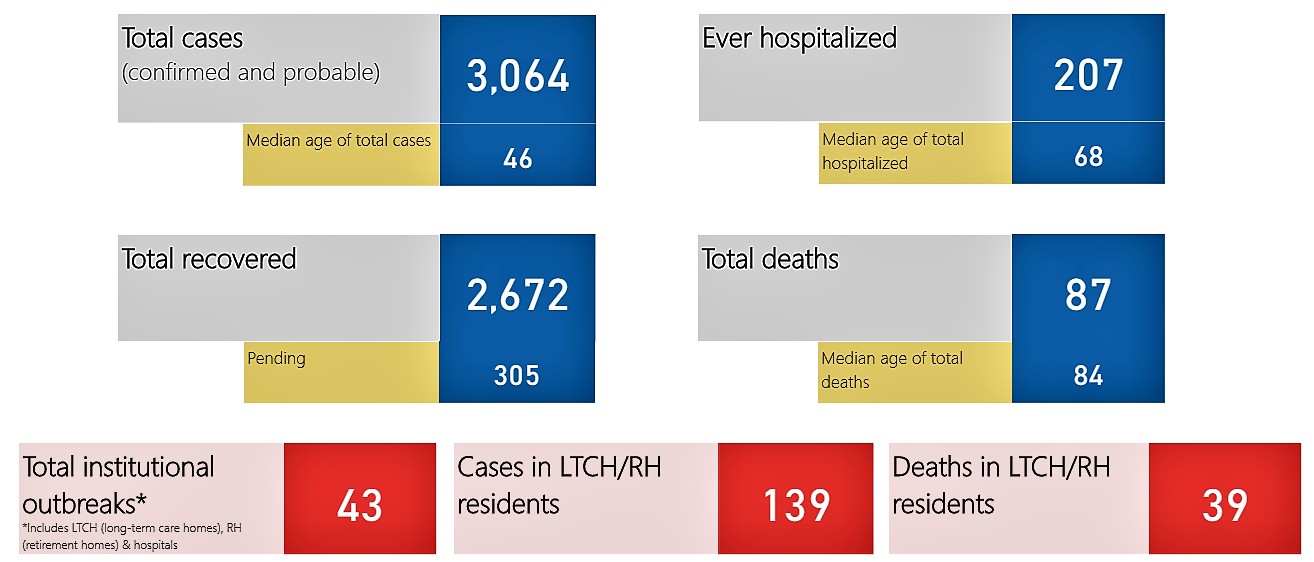
Mayor continues to mislead public about local testing numbers while Brampton sees increase in new cases
While the residents of Brampton remain stuck in phase 1 of the province’s reopening timeline, unlike most other parts of Ontario that have been allowed to move onto the next stage, Mayor Patrick Brown sounded like Donald Trump, using misleading testing numbers to assure residents that the local response is meeting expectations.
“We have now tested more people in our hospital than anywhere else in the province, the number one testing hospital in Ontario is our very own William Osler Health System,” Brown says in a video posted to his Twitter account Friday.
On the video he released, as he utters those words, text flashes below the mayor: “52,000 Tests”. Text at the bottom of the video then repeats the claim that the number represents more testing than any other "Hospital in Ontario".

But the figure and Brown’s claim are blatantly misleading. The number he is using was not for Brampton, it was for the total testing done by the William Osler Health System across its three screening sites, only one of which is in Brampton, while the other two are in Etobicoke.
From the start of the pandemic to near the end of May, Osler had only done about 9,000 tests in Brampton between March 11 and May 29, according to its director of public relations, Cara Francis.
The testing numbers for the city are way below what the mayor is falsely claiming and his repeated statements that “our hospital” is responsible for the testing numbers is another blatant misrepresentation. Osler is not a “hospital” it is a health network that runs three hospital facilities in Brampton and Etobicoke. The only hospital in Brampton that has done testing is the Peel Memorial facility, which is not even a full-service hospital and its testing centre was closed last week to make way for a new drive-through screening facility that was opened at South Fletcher’s Sportsplex.
The mayor seems to be playing dangerous politics, trying to make residents think the testing situation in the city is much better than it actually is, instead of giving Brampton residents the true picture of what is happening in their backyard.
Dramatically inflated testing numbers have been shared by the mayor more than once during the pandemic. He first made the false claims using Osler’s overall testing figures which include its two Etobicoke sites at a press conference Wednesday. Two days later, on Friday, Francis clarified to The Pointer that 55,000 tests had been done across all of its sites as of June 19.
Despite questions to the mayor right after his Wednesday press conference about his misleading statements, and a response from his staff that they did not know why he was using the overall figures, claiming he was going off numbers provided by Osler, Brown repeated his misleading remarks on Friday in his video post to social media.
It’s not the first time he has tried to falsely present a rosy picture despite a more troubling reality, as his city becomes the focus of national attention for its high recent rates of infection.

At his May 27 press conference, Brown said 1,184 people were tested on May 26 at the Peel Memorial assessment centre. “Just speaking this morning to our hospital CEO, I understand yesterday was one of the busiest days for testing. 1,184 people were tested at the assessment centre in Brampton,” he said. Numbers Osler shared with The Pointer show 310 tests were conducted at the Peel Memorial assessment centre May 26. When Brown made the false claim, the Brampton testing centre had not reached a daily total anywhere close to the almost 1,200 tests he had stated. The average daily number up to that point was less than a quarter of the figure Brown used.
The exact source from where Brown is getting his numbers is not known. Gary Collins, the director of communications for the mayor’s office, said numbers the mayor used could have possibly come from a combination of all the assessment centres in the Region (including those in Mississauga) or perhaps the numbers included the Etobicoke testing activity, he said.
Brown has shown a lack of regard for the facts in the past. Early in the year, before the pandemic, when the city’s ongoing hallway healthcare crisis was creating a lot of negative publicity, the mayor publicly claimed Premier Doug Ford had committed to building a badly needed third hospital in the city. The premier’s office corrected his false statement, pointing out that Ford’s remark had referred to his support for the already-planned expansion of Peel Memorial, which is not a full-service hospital.
Peel is one of only three regions still held back in the province’s first phase of reopening, while the rest of Ontario is now in phase 2.
The numbers for Mississauga are headed in the right direction, but the Region’s top public health official, Dr. Lawrence Loh, said last week that a consistent reduction of new cases is still not being seen across Peel, particularly in Brampton.
June 17 saw 38 new cases of COVID-19 in the region, 34 of them in Brampton. For the week that ended Saturday, Brampton had 185 new cases, an average of 26.43 each day, while the prior week saw 163 new cases in the city, an average of 23.29 a day. The data shows Brampton’s new-case rate is not going in the right direction. Meanwhile, Brown seems more focused on spinning testing figures to make the local response appear less concerning.

Brampton COVID-19 cases as of June 21, with Peel institutional numbers at the bottom
In total, as of June 21, according to the Region of Peel, there have been 3,064 COVID-19 cases in Brampton since the pandemic and, of those, 2,672 residents have recovered. It represents an alarmingly high per capita rate of 47.14 per 10,000 residents (based on a population of 650,000) compared to Ontario’s per capita rate of 23.09 per 10,000 and Mississauga’s 34.04 cases per 10,000 residents (based on a population of 750,000). Brampton has had 53 percent of Peel’s COVID-19 cases, compared to 44 percent in Mississauga, as of June 21. This marks a significant shift, as the region’s largest city made up the majority of cases about six weeks ago. Over the past few weeks, Brampton’s infection rates have been worryingly high compared to other cities across Ontario and the rest of Canada.
Brampton has been at the centre of the region’s recent COVID-19 troubles, but you wouldn’t know it from listening to Brown.
Brampton’s lone testing centre has raised issues of capacity in the past, playing a role in the shift to the drive-through site. On June 16, Osler shifted its testing centre from an in-person model at Peel Memorial to the drive-up facility at South Fletcher’s Sportsplex. On its Tuesday opening, 470 residents were tested, Brown said, already passing late-May testing numbers at Memorial, which hovered in the 300-range, well above the even more woeful local testing numbers during the first eleven weeks of the pandemic.
By May 29, Brampton’s lone facility had only tested about 12 percent of the target set by the province, and Premier Ford made it clear that certain local efforts were not meeting the expectation to help Ontario hit 20,000 tests a day. When Dr. Loh was asked if Peel, and Brampton specifically, was one of the areas Ford complained about last month, he did not answer.
To put the extent to which Brown tried to mislead the public into context, his claim last week of 52,000 tests conducted "at our hospital", more than any other hospital in Ontario, when in fact only about 9,000 tests had been done in total in the city by Osler between March 11 and May 29, an eleven-week period, can be compared to more than 6,100 tests done at Mississauga's two hospitals in just one week, between June 8 and 14, according to data provided by Trillium Health Partners, the system which runs Credit Valley Hospital and Mississauga Hospital.
Brampton resident Angad Channa, like many others, has called for more accessible testing in a similar manner to the province's pop-up testing centre that opened for one day at Gore Meadows Community Centre last week, when 254 people were tested, according to Brown. Dr. Loh revealed Wednesday more pop-ups are planned for Brampton to make it easier to get tested. “We will bring mobile testing to where people are in recognition for the purpose of convenience and not for any other purpose,” he said. No date or further details were shared.
Channa is frustrated with his community’s response. “The government is not there to babysit you. You've got to take care of your own health,” he said. He says he continues to see people, specifically younger people, out in large groups, a frustrating sight, he says, pointing out that it’s a selfish attitude, one that could put others at risk.
He wants to know why Brampton is seeing high infection rates.
“You’re going to have to look deeper to why this is,” he said. “Do we have a lot of younger people? Do we not have enough resources?”
Brown said many residents reacted positively when it was revealed the region would not move to the province’s second phase, a contrast to what many are saying on social media. “If anything, people want more precaution for keeping our community safe, not relaxing, and so I think there always may be a few noisy individuals on social media who may complain but the vast majority understand the responsibility we have to public health and that's what I noticed on social media,” he said.
Brown said he spoke with the premier about not wanting to rush reopening and was happy a regional approach was being taken. Meanwhile, Brampton residents are hoping local cases go down so they can inch closer to normal life.
Email: [email protected]
Twitter: @nida_zafar
Tel: 416 890-7643
COVID-19 is impacting all Canadians. At a time when vital public information is needed by everyone, The Pointer has taken down our paywall on all stories relating to the pandemic to ensure every resident of Brampton and Mississauga has access to the facts. For those who are able, we encourage you to consider a subscription. This will help us report on important public interest issues the community needs to know about now more than ever. You can register for a 30-day free trial HERE. Thereafter, The Pointer will charge $10 a month and you can cancel any time right on the website. Thank you.
Submit a correction about this story


